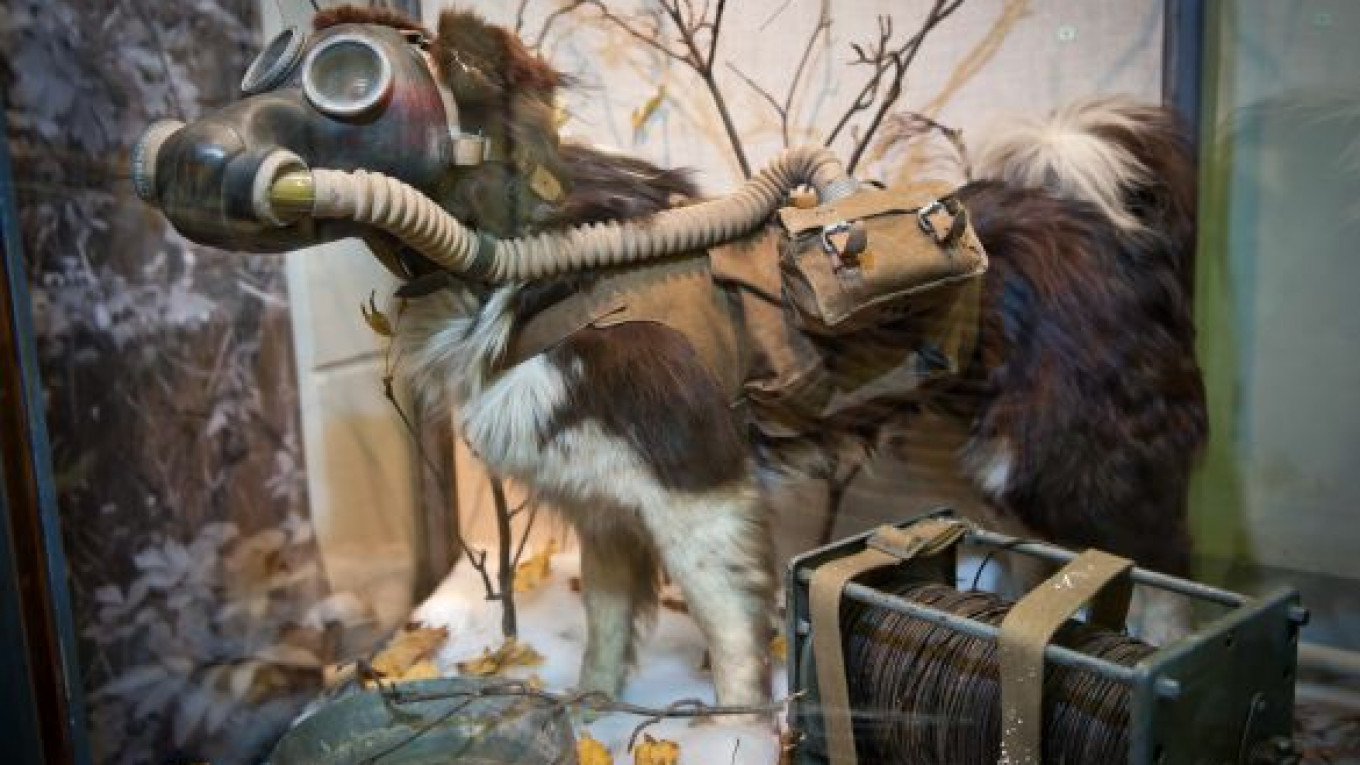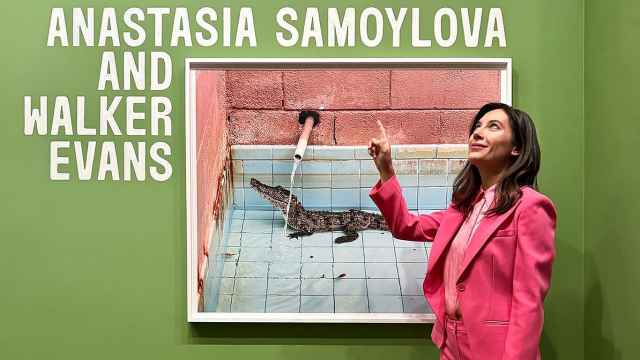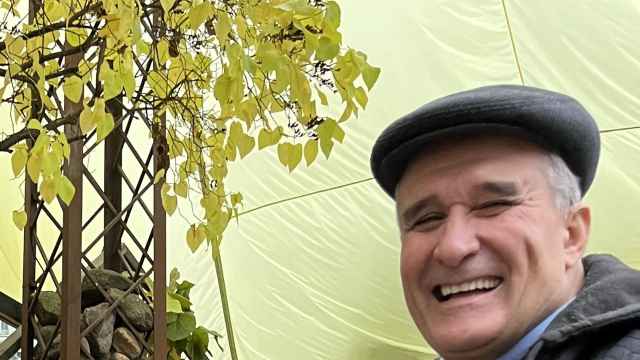ST. PETERSBURG — Gas masks for horses, body armor for dogs and various accessories for pigeons, snakes and other animals went on display at a thought-provoking exhibition dedicated to the use of animals in war that opened at St. Petersburg’s Artillery Museum on Friday.
At the “Animals in War” exhibition, visitors can see stuffed animals in military garb, including a model of a horse dressed in Oriental armor from the 15th to 16th centuries and a dog in a gas mask.
A collection of paintings, graphics, sculpture compositions and rare photos also help to illustrate the life of animals under war conditions.
Valery Krylov, director of the Artillery Museum, said the exhibition’s theme resonated with the Animals in War memorial in London dedicated to the countless animals that have served and died under British military command throughout history.
“There is a very heartbreaking inscription on that monument which reads, ‘They had no other choice.’ We have had as many animals die in war in Russia, but there are not yet enough monuments to them. Therefore we hope this exhibition will partly pay tribute to them,” Krylov said.
Sergei Yefimov, deputy head of the museum and a curator of the exhibition, said “animals have fought in wars together with people from ancient times, and people sometimes used them in rather unusual ways.”
The Carthaginian military commander Hannibal employed pots and jars full of snakes when fighting the Romans, throwing them onto enemy ships. When the jars broke, the snakes escaped, biting and distracting the sailors, giving the Carthaginians an advantage, Yefimov said, showing a model of such a jar at the exhibition.
History has records of many other animals being used in battle.
In 1942, a female military messenger pigeon saved a British submarine that had begun to sink after a Nazi bombing and which could not report its coordinates ashore. The resourceful sailors put the birds into special capsules and released them with the help of torpedo devices. As a result of severe weather conditions, the male pigeon died, but the female one made it to the navy base, carrying a message asking for help. The submarine and its crew were rescued.
Carrier pigeons are able to locate their home base from as far as 600 kilometers away. This fact, along with many more, is presented as part of the exhibition’s interactive section, designed specially for children, where they can also draw animals and solve puzzles about them.
It is here that visitors can also see a picture of Dick, a sheepdog and World War II hero who served on the Leningrad front. During the war, Dick sniffed out almost 13,000 mines and helped to prevent the Pavlovsk Palace from being blown up, finding a bomb under the palace’s basement less than three hours before it was due to explode. Dick was injured three times, but lived to a ripe old age.
Not all of the stories end so happily, however. Another mission that Soviet dogs were used for during World War II was to explode enemy tanks by running under the vehicles with explosives tied to their sides. In order to train dogs for such missions, their food was always given to them under tanks. A copy of the explosive devices used is on display at the exhibition.
Horses have played a pivotal role in battles for centuries. After World War I, in which gas was used extensively, the Red Army prepared gas masks for all its horses. A number of gas masks were even custom designed for certain horses and had their names written on them. One gas mask at the exhibition was designed for a horse named Veter (Wind). But since gas was not used after World War I, the masks were fortunately not needed, Yefimov said.
During the Battle of Stalingrad in World War II, the Soviets gathered camels and used them to carry essential cargo for battle. However, the animals moved slowly and served as perfect targets for the German army.
“After one such attack, there was a whole field of dead camels outside Stalingrad,” Yefimov said.
Nevertheless, two Russian camels, Masha and Yasha, made it from Stalingrad to Berlin, surviving the whole war while towing a large cannon. When they got to Berlin and the war ended, the commanders were unsure what to do with them. One then suggested killing the camels for their meat. The soldiers, however, refused to do so and brought them to the Berlin Zoo, where the Germans later took good care of them, Yefimov said.
“Animals in War” runs through April 8 at the St. Petersburg Artillery Museum, 7 Alexandrovsky Park. Tel. (812) 232-0296. Metro Gorkovskaya.
A Message from The Moscow Times:
Dear readers,
We are facing unprecedented challenges. Russia's Prosecutor General's Office has designated The Moscow Times as an "undesirable" organization, criminalizing our work and putting our staff at risk of prosecution. This follows our earlier unjust labeling as a "foreign agent."
These actions are direct attempts to silence independent journalism in Russia. The authorities claim our work "discredits the decisions of the Russian leadership." We see things differently: we strive to provide accurate, unbiased reporting on Russia.
We, the journalists of The Moscow Times, refuse to be silenced. But to continue our work, we need your help.
Your support, no matter how small, makes a world of difference. If you can, please support us monthly starting from just $2. It's quick to set up, and every contribution makes a significant impact.
By supporting The Moscow Times, you're defending open, independent journalism in the face of repression. Thank you for standing with us.
Remind me later.






